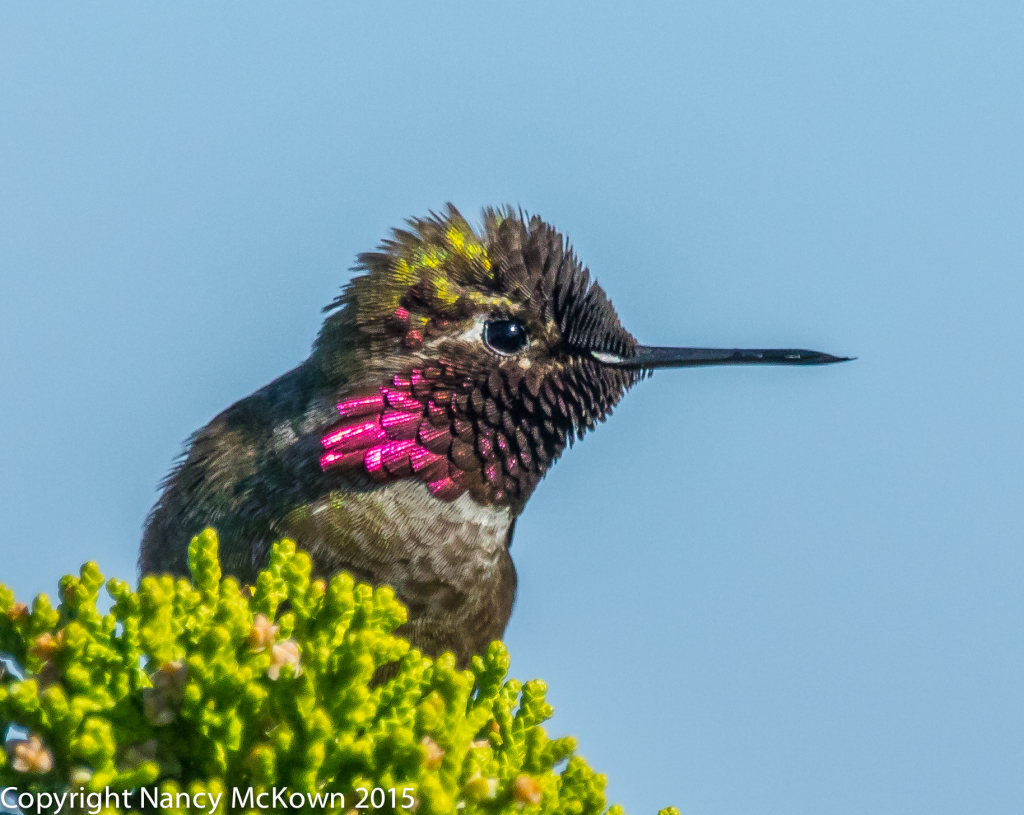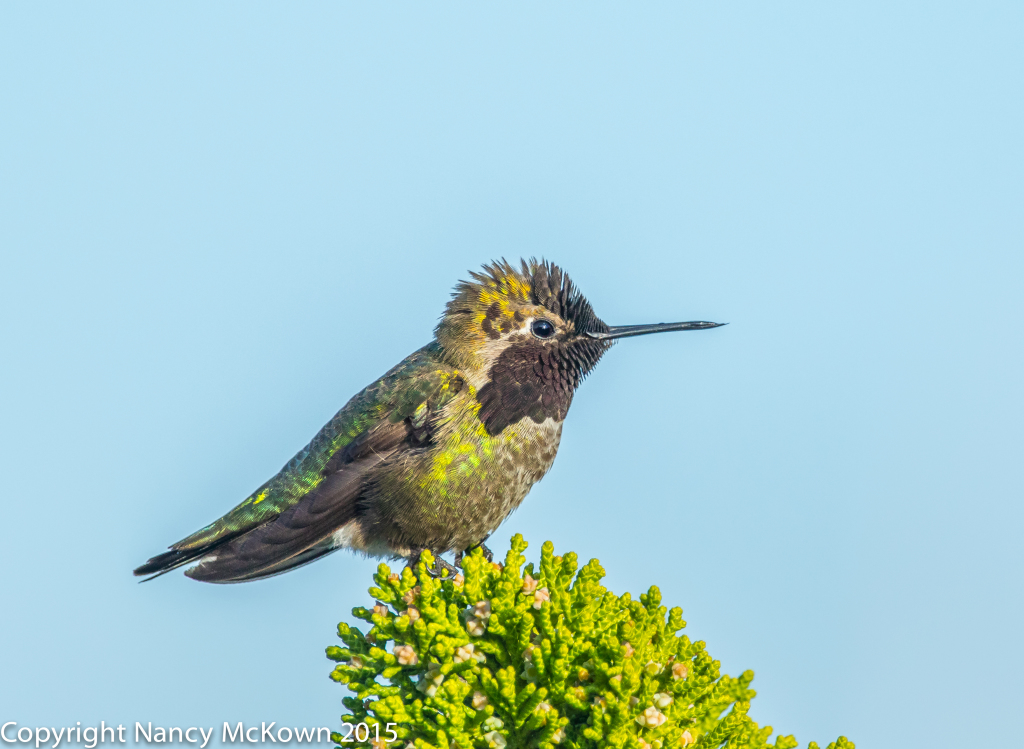Photographing the Anna’s Hummer in SanDiego
Hummingbirds are fascinating to watch and photograph, especially when the light is just right and the camera catches their shimmering iridescent colors sparkling in the light.

ISO 640; f/6.3; 1/3200 Second
Feather Science
When the light hits on the microscopic structures on the surface of the male hummer’s feathers, it breaks up into its component colors (just like it would on a prism). On a sunny day, amplified iridescent reds, blues and purples are refracted back to the human eye. The intensity of these colors vary, depending on brightness of light, the angle of light, the movement of the feather surface, and whether the hummer is displaying his breeding or non breeding plumage.
Photographing the Light Just Right
This male Anna’s Hummingbird was photographed in late February, 2015 in San Diego, California. He displays beautiful iridescent colors on the “gorget patch” or reflective feathers on his throat. In the photograph above, the camera’s lens caught the luminous colors displayed in hummer’s forehead and gorget patch. In the photo below, the angle of light is slightly different, and the lens sees very little iridescent color.
NOTE: It’s easy to see in both of these photos that this hummer’s upper beak is shorter than his lower beak. I assume that he broke it off somewhere during one of his adventures. It did not seem to impact his ability to get nourishment.

At his Angle, Very Little of His Iridescent
Colors on his Gorget Patch are Visible.
ISO 320; f/5.6; 1/1250 Second










I love the take off and landing shots. Very clever.